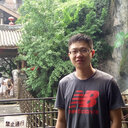Ursolic acid inhibits colorectal cancer angiogenesis through suppression of multiple signaling pathways.
Kata kunci
Abstrak
Angiogenesis plays a critical role in the development of solid tumors by supplying nutrients and oxygen to support continuous growth of tumor as well as providing an avenue for hematogenous metastasis. Tumor angiogenesis is highly regulated by multiple intracellular signaling transduction cascades such as Hedgehog, STAT3, Akt and p70S6K pathways that are known to malfunction in many types of cancer including colorectal cancer (CRC). Therefore, suppression of tumor angiogenesis through targeting these signaling pathways has become a promising strategy for cancer chemotherapy. Ursolic acid (UA) is a major active compound present in many medicinal herbs that have long been used in China for the clinical treatment of various types of cancer. Although previous studies have demonstrated an antitumor effect for UA, the precise mechanisms of its anti-angiogenic activity are not well understood. To further elucidate the mechanism(s) of the tumorcidal activity of UA, using a CRC mouse xenograft model, chick embryo chorioallantoic membrane (CAM) model, the human colon carcinoma cell line HT-29 and human umbilical vein endothelial cells (HUVECs), in the present study we evaluated the efficacy of UA against tumor growth and angiogenesis in vivo and in vitro and investigated the underlying molecular mechanisms. We found that administration of UA significantly inhibited tumor volume but had no effect on body weight changes in CRC mice, suggesting that UA can suppress colon cancer growth in vivo without noticeable signs of toxicity. In addition, UA treatment reduced intratumoral microvessel density (MVD) in CRC mice, decreased the total number of blood vessels in the CAM model, and dose and time-dependently inhibited the proliferation, migration and tube formation of HUVECs, demonstrating UA's antitumor angiogenesis in vivo and in vitro. Moreover, UA treatment inhibited the expression of critical angiogenic factors, such as VEGF-A and bFGF. Furthermore, UA suppressed the activation of sonic hedgehog (SHH), STAT3, Akt and p70S6K pathways. Collectively, our findings suggest that inhibition of tumor angiogenesis via suppression of multiple signaling pathways might be one of the mechanisms whereby UA can be effective in cancer treatment.


